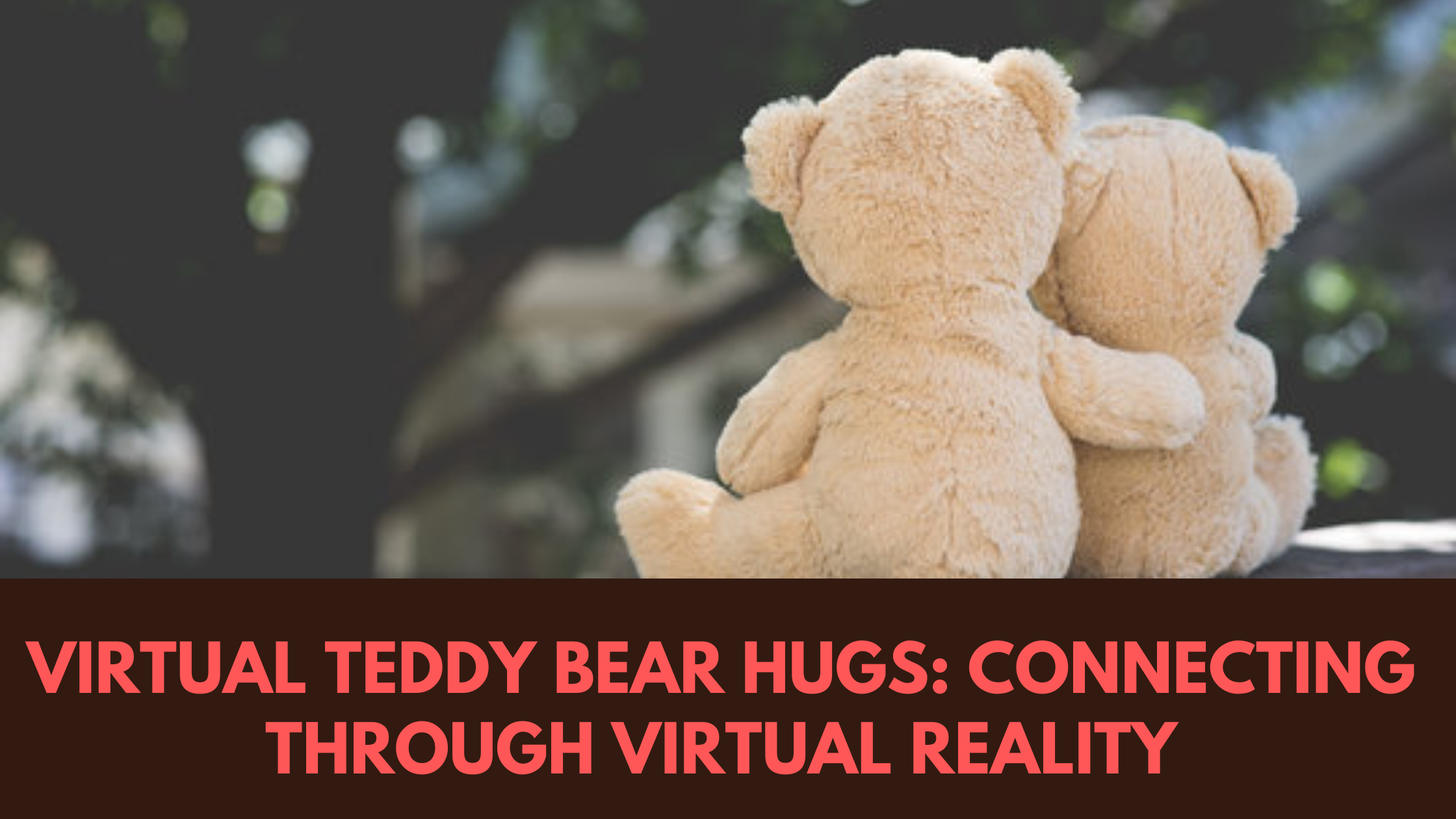In today's fast-paced, digital age, the way we connect with one another has undergone a profound transformation. From social media platforms to video calls, technology has revolutionized the way we interact. But what if technology could take it a step further and offer a deeper, more immersive connection? Enter Virtual Reality (VR), a technology that has been making waves in various industries, and it's also changing the way we connect with each other on a personal level. In this article, we'll explore how VR is enabling us to share teddy bear hugs and fostering meaningful connections in the digital realm.
The Rise of Virtual Reality
Virtual Reality, once a realm of science fiction, has rapidly become an accessible and innovative technology. It's no longer confined to the world of gaming and entertainment; VR is branching out into fields like education, therapy, and social interaction. The concept is simple but profound: immerse yourself in a digital world where your senses are fully engaged, creating an experience that feels as real as the physical world.
The appeal of VR lies in its ability to transcend the limitations of distance and geography, allowing people to connect in ways that were previously unimaginable. This is where the idea of sharing Giant teddy bear hugs comes into play - it's about harnessing the power of VR to convey emotions and strengthen connections.
The Power of Human Connection
Before delving deeper into how VR facilitates emotional connections, it's crucial to understand the significance of human connection itself. Connection is the foundation of human existence. It shapes our sense of belonging, influences our mental and emotional well-being, and enriches our lives in countless ways.
In an increasingly digital world, it's easy to feel disconnected. Social media and messaging apps, while facilitating communication, often lack the depth of a true, face-to-face interaction. This is where VR steps in, offering a more immersive and emotionally resonant way to connect with others.
Virtual Reality and Empathy
Empathy is the ability to understand and share the feelings of another. In traditional digital communication, empathy can be challenging to convey fully. Text messages, even with the addition of emojis, lack the nuances of tone, body language, and facial expressions. Video calls come closer but still fall short in replicating the depth of an in-person conversation.
VR, however, has the potential to bridge this gap. By creating virtual environments where users can interact as if they were physically present, VR taps into our natural capacity for empathy. When two people meet in a VR space, they can see each other's avatars, hear each other's voices, and even engage in physical interactions through hand-tracking and haptic feedback devices.
Imagine being able to share a virtual space with a loved one who lives miles away. You can hug, hold hands, and even engage in shared activities, all while feeling as if you're in the same room. This level of immersion enables a deeper emotional connection that transcends the limitations of traditional digital communication.
VR as a Tool for Long-Distance Relationships
One of the most poignant applications of VR technology is its potential to strengthen long-distance relationships. Whether it's a romantic relationship, a close friendship, or family ties, being separated by physical distance can take a toll on emotional connections.
With VR, long-distance couples, for example, can enjoy virtual date nights in stunning digital environments. They can hold hands, dance, and share intimate moments, all from the comfort of their own homes. The ability to create shared experiences in a virtual world helps maintain the emotional intimacy that distance often threatens to erode.
Moreover, VR can also serve as a bridge between generations. Grandparents can interact with their grandchildren, play games, and read stories as if they were in the same room. These shared moments, facilitated by VR, create lasting memories and help nurture intergenerational bonds.
VR in Therapy and Mental Health
The therapeutic potential of VR is another dimension worth exploring. In the realm of mental health, VR is being used to treat conditions like PTSD, anxiety, and depression. Virtual environments are created to expose individuals to controlled, immersive experiences that can help them confront and manage their psychological challenges.
But what makes this therapy particularly compelling is the potential for human connection within the virtual space. Therapists can meet with their clients in VR, providing a more personal and empathetic approach to mental health treatment. Patients can also connect with support groups in virtual environments, fostering a sense of community and understanding that can be instrumental in their recovery.
The Future of Virtual Teddy Bear Hugs
As VR technology continues to evolve, we can expect even more immersive and emotionally resonant experiences. The development of haptic suits, which allow users to feel physical sensations in the virtual world, holds great promise for deepening emotional connections. Imagine being able to feel the warmth of a hug or the gentle touch of a loved one's hand in a virtual environment.
Moreover, the growth of the metaverse, a collective virtual shared space, is set to revolutionize how we connect in the digital realm. The metaverse promises a seamless integration of the physical and digital worlds, creating a vast interconnected space where people can work, play, and socialize. Within the metaverse, Big teddy bear hugs may become even more commonplace as we seek to maintain and strengthen our connections in this digital frontier.
Challenges and Ethical Considerations
While the potential of VR for fostering human connection is undeniable, it also raises important ethical considerations. Privacy and security in virtual spaces are critical concerns. Ensuring that users have control over their personal information and boundaries in virtual interactions is essential.
Additionally, as VR becomes more integral to our lives, questions about the blurring of the line between the digital and physical world arise. It's essential to strike a balance between meaningful virtual connections and maintaining healthy real-world relationships.
In Conclusion
Virtual Reality is not just about gaming or entertainment; it's a powerful tool for deepening human connections in an increasingly digital world. The concept of virtual teddy bear hugs is a testament to the emotional resonance that VR can offer. It has the potential to bring people closer, strengthen relationships, and create shared experiences that transcend physical boundaries.
As VR technology continues to advance, we can expect to see even more innovative ways to connect and share emotions in the digital realm. Whether it's bridging the gap in long-distance relationships, enhancing therapy and mental health treatment, or creating vibrant communities in the metaverse, VR is revolutionizing the way we connect, one virtual teddy bear hug at a time.


